On this page, you will find sampling of newspaper clippings that describe past viewings of solar eclipses. Thank-you to staff at Robertson Library for providing some of the scanned newspaper clippings that you will see below.
May 28, 1900
This partial solar eclipse had its maximum after 10am, with about 86% of the sun covered by the moon. According to The Guardian newspaper, they had provided instructions to readers on how to view the eclipse safely – by smoking a piece of glass. (CAUTION: This is NO longer a recommended way to view an eclipse safely.)
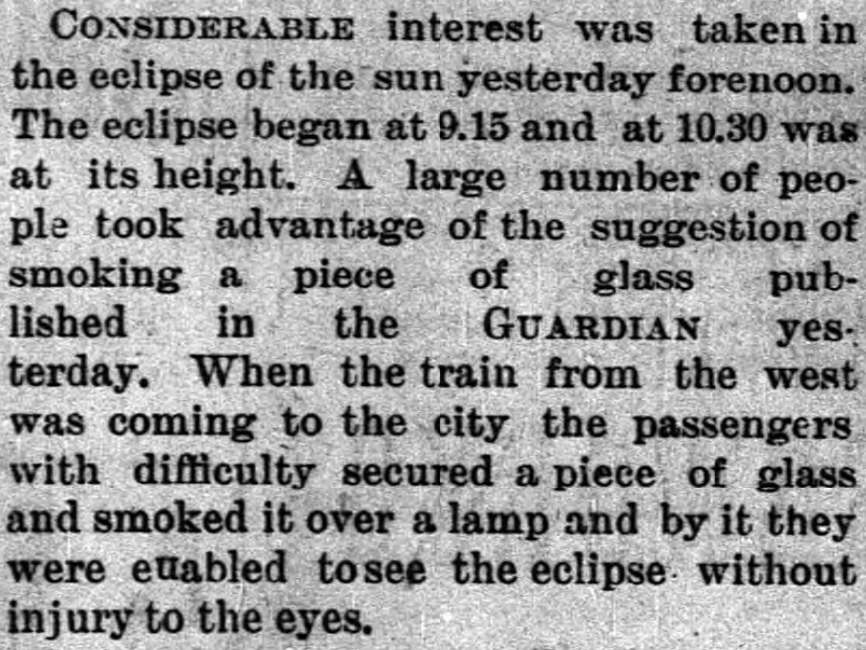
August 31, 1932
This partial solar eclipse reached maximum at about 4:30pm with around 90% of the sun covered by the moon. The advice in the The Guardian was once again to view the eclipse through densely smoked glass. Don’t try this yourself; follow modern recommendations for safe eclipse viewing.

July 10, 1972
This total solar eclipse drew a lot visitors to PEI: scientists and astronomy enthusiasts from the United States and other parts of Canada. This can probably be attributed to the eclipse path being mostly through northern parts of Canada, so PEI was one of the more southern locations that would experience totality and was easier to reach for visitors.
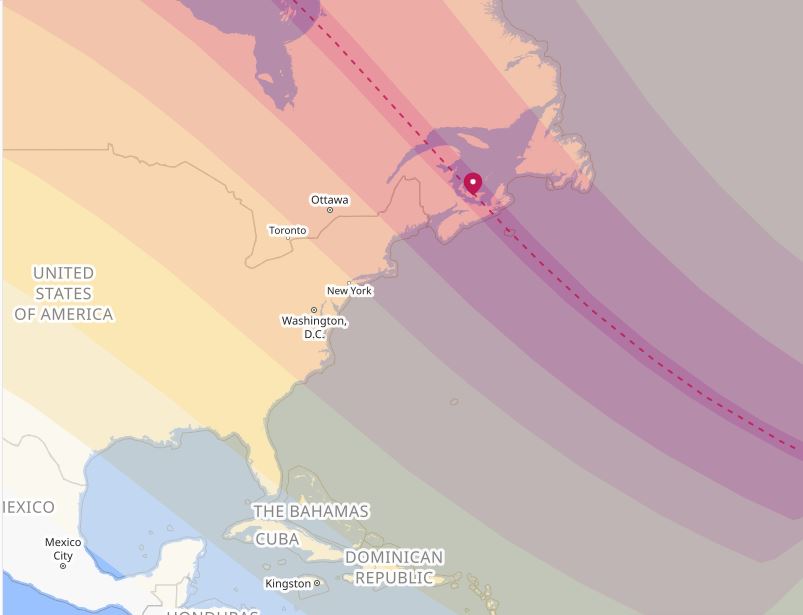
Many of the visitors were hosted by the Department of Physics, as was described by Professor Earl Wonnacott in an article he wrote for the Journal of the Royal Astronomical Society of Canada in 1983 (see snippet below).

The Guardian reported on July 10 that many of the 200-plus scientists visiting the Island were coming in their own aircraft, showing a photo of about 30 “general aviation aircraft” on its front page. Visiting scientists included sixty members of the Smithsonian Institute of Washington, D.C., USA, who observed from Stanhope Beach.
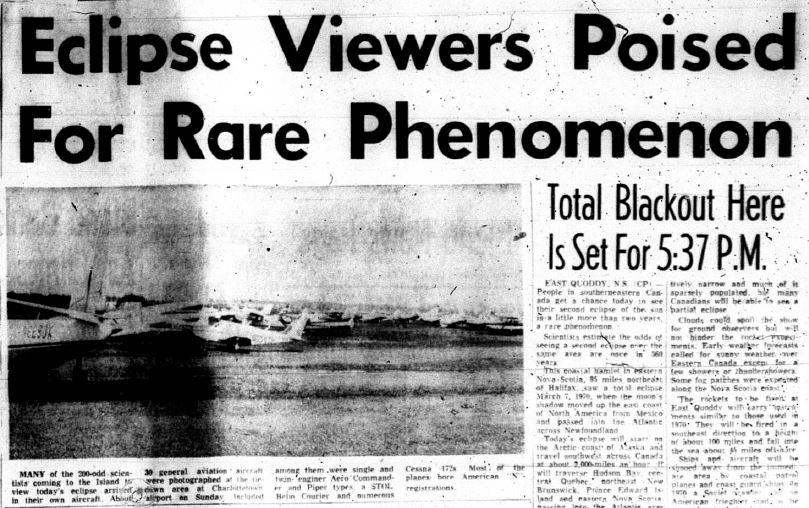
Also among the visiting scientists was a group of staff and students from Williams College in Williamstown, Massachusetts, USA. You can see photos of their telescope and spectroscope, and the shed they built on the shore to house it, on their expedition website.
Five high school students from Lexington High School in Lexington, Massachusetts, USA set up their experiments at Brackley Beach, as described (and illustrated) in The Evening Patriot on July 10, 1972. The students’ teacher also taught at the University of New Brunswick (UNB) during the summers, so the group was being assisted in their experiments by four instructors from UNB.
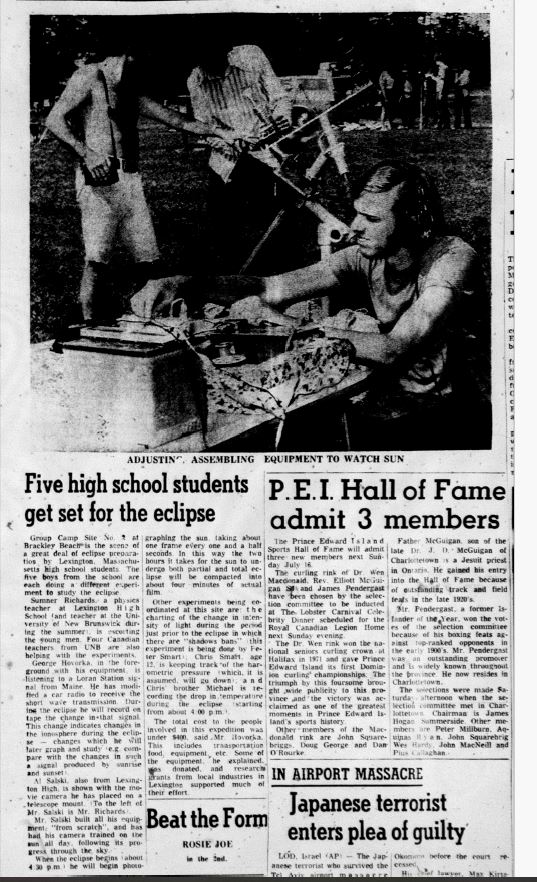
UPEI Physics professor, Dr. Karnail Jammu, collaborated with researchers from York University to conduct experiments on the eclipse. The nature of these experiments were not described in the interview he conducted with The Guardian, but some planned experiments involved viewing the eclipse from a light aircraft, which was thwarted by high altitude clouds. Whatever other experiments were conducted, the group was “fairly happy” with the results, as was reported by The Guardian on July 11, 1972.

The Guardian also described that the residents of the province had been advised to watch the eclipse on television just before and after the eclipse, and to only head outside during the brief two minutes of totality.
Many people went to the north shore of the Island to observe the eclipse with telescopes (presumably with solar filters) and homemade viewers. The Guardian provided a photo on its July 11, 1972 front page showing a packed observing site at Stanhope Beach.
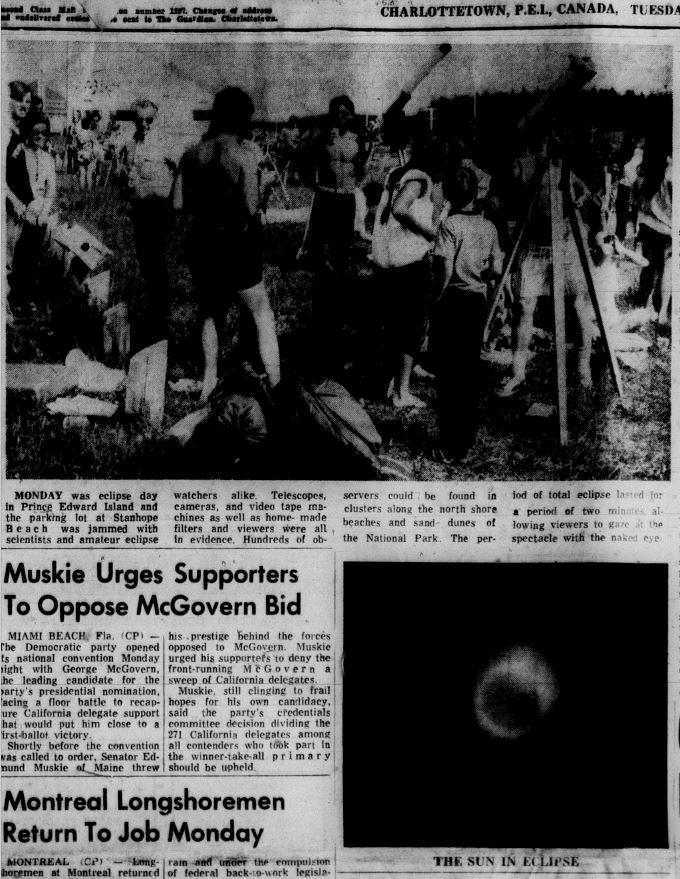
A medal was produced commemorating the 1972 eclipse on one side, and the 1973 centennial of PEI joining Confederation on the other side.
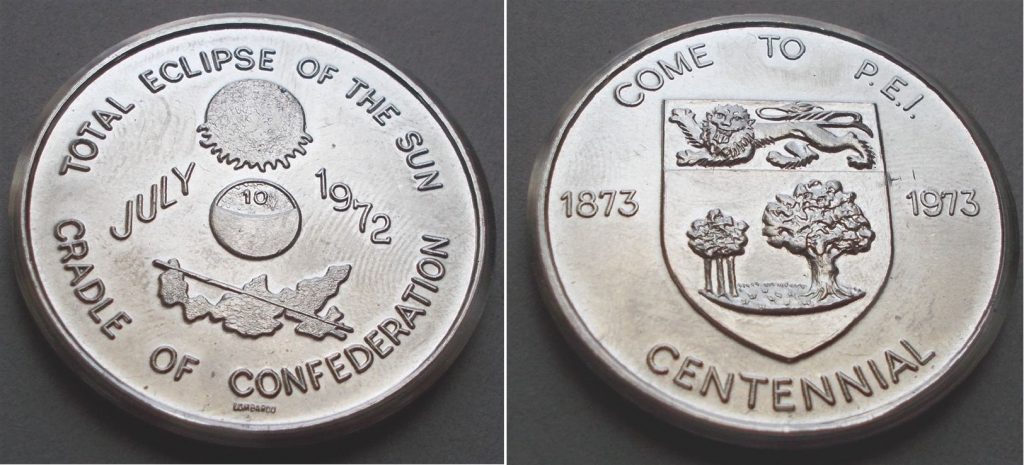
August 21, 2017
In this partial eclipse solar eclipse, 44.57% of the sun’s surface was blocked by the moon at the eclipse maximum. In the Department of Physics, we had planned to host a viewing event, expecting an attendance of maybe 50 people (which would be large compared to our typical viewing events). But this was the first solar eclipse of the social media age for PEI and excitement about the total eclipse in the United States of America spilled over to the Island as the eclipse date approached. We realized that we would probably have a large crowd at the event and managed to purchase some extra eclipse glasses the week before the event, giving us a grand total of 100 pairs, plus 4 solar telescopes, with which to view the eclipse. Two of the solar telescopes belonged to volunteers who assisted our department with the event.
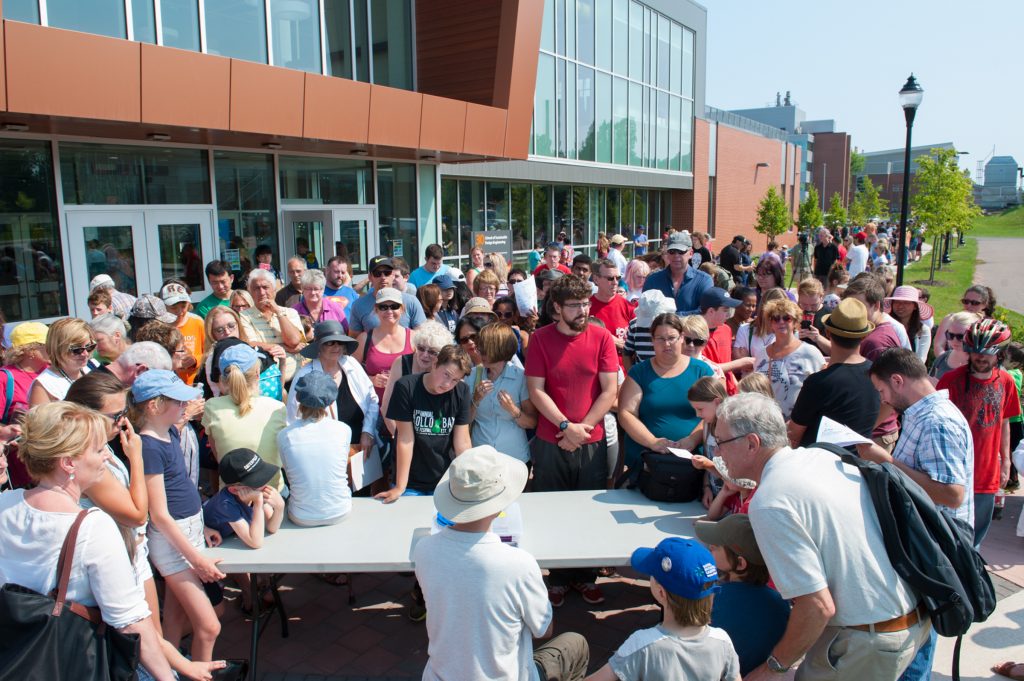
We were overwhelmed when hundreds of people showed up to our event. Everyone showed great patience as they shared the available eclipse glasses and waited for their turn at the telescopes. The weather cooperated and provided a sunny, warm day.
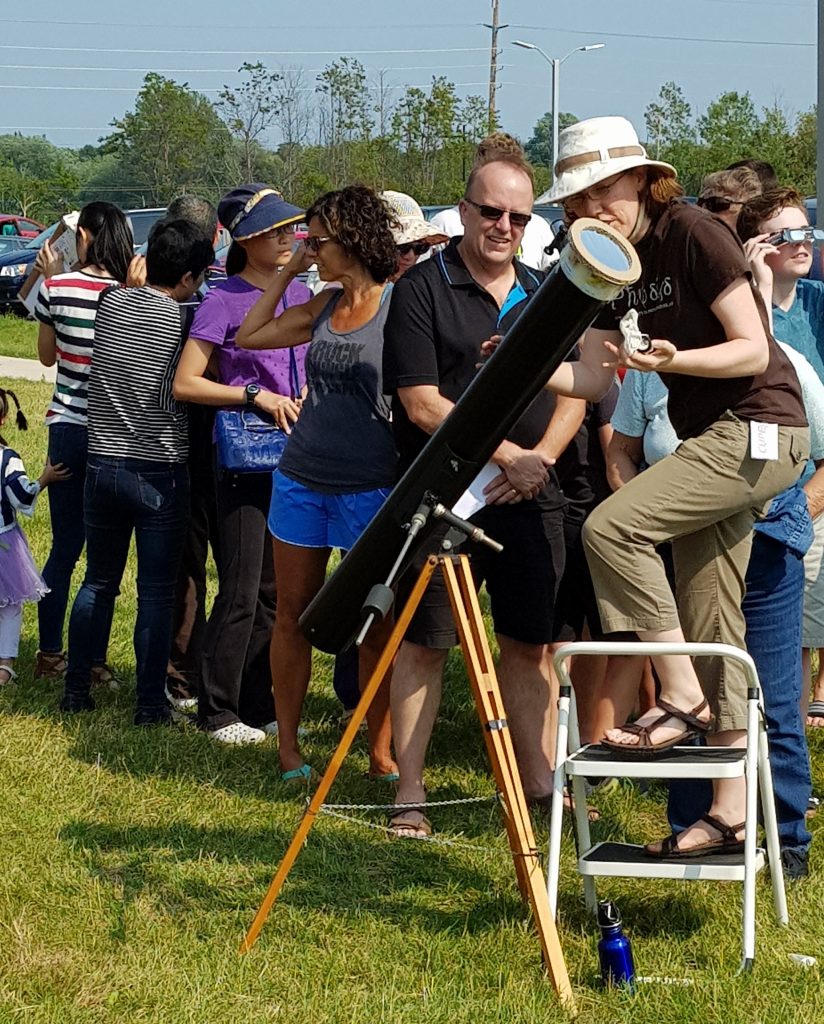
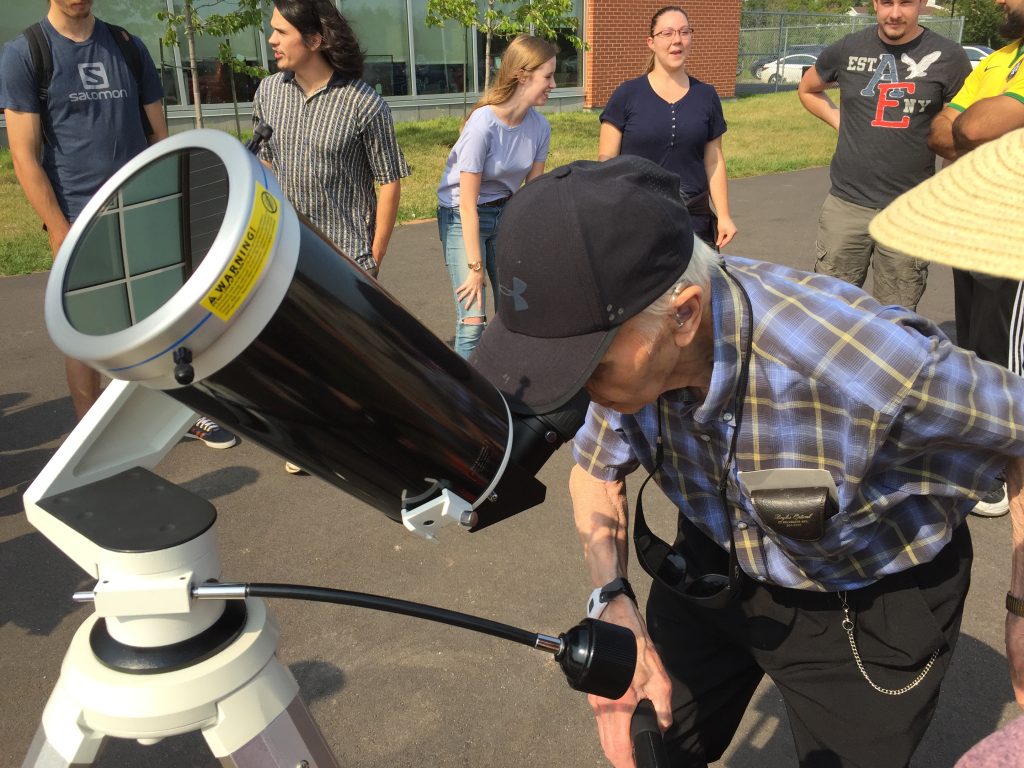
The Athena Community Astronomy Club also hosted an event at the Summerside boardwalk. Club members had some eclipse viewers to allow visitors to get a safe look directly at the eclipse. They also set up a telescope to project an image of the eclipse for safe viewing.





